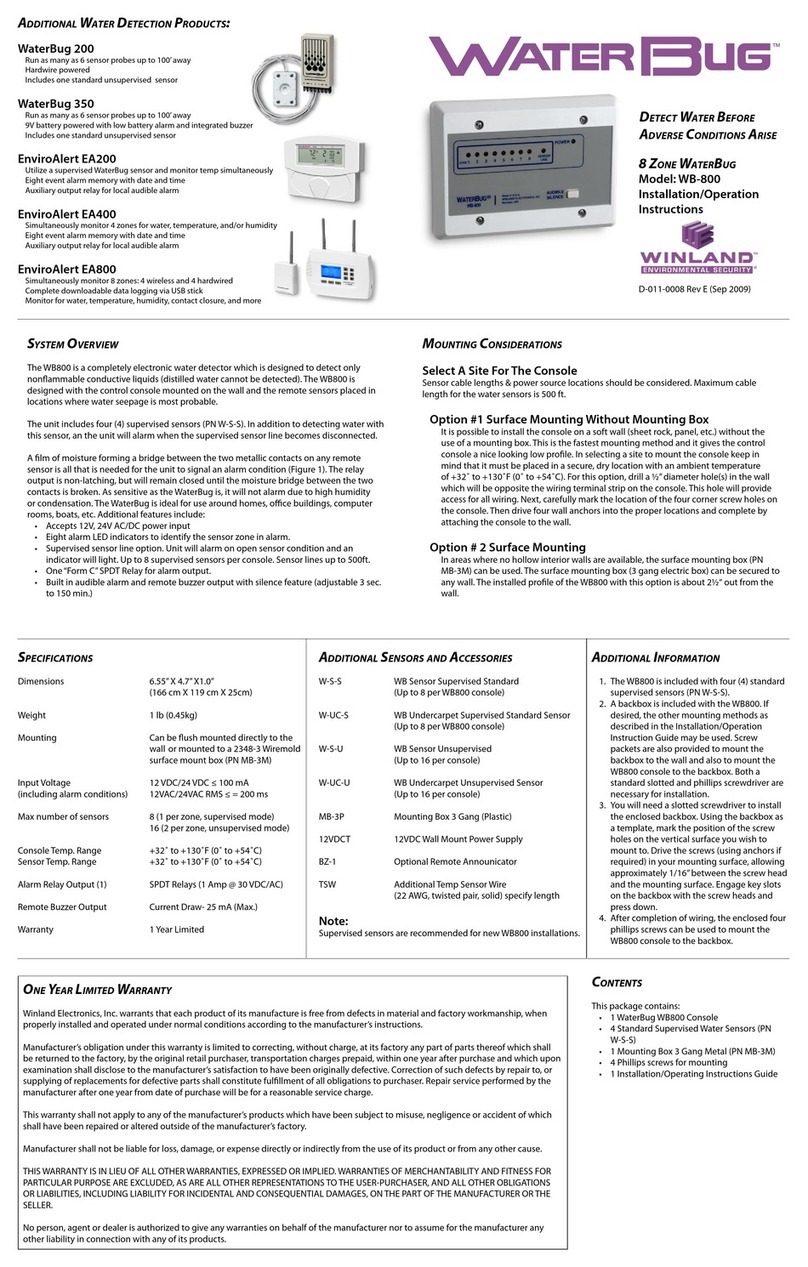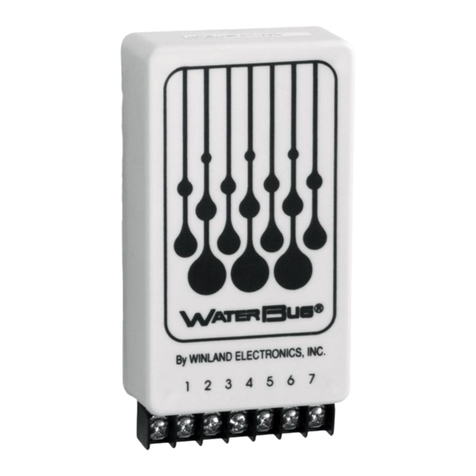SYSTEM OVERVIEW
The Vehicle Alert is a simple to use vehicle motion detection system that operates on the principle that any moving ferrous
metal object will distort the Earth’s magnetic field to some degree. The technology used to measure this distortion is one of
the most reliable forms of outdoor protection available. Unlike other outdoor motion detectors that sense heat, vibration or
change in position of an object, the Vehicle Alert will sense only moving iron or steel. This makes the Vehicle Alert a selective
sensor, reducing the possibility of false alarms from animals, falling tree branches, or people in an outdoor environment. By
selectively placing the Vehicle Alert probe, you can detect vehicles entering or leaving an area as well as the unauthorized
movement of a parked vehicle such as your car, a boat, or motor home. Objects not constructed of iron or steel can also be
monitored by equipping them with a large magnet. When the object is moved past the probe, the Vehicle Alert will activate.
Follow the instructions for temporary installation and try your own ideas such as monitoring the opening of steel garage
doors or the movement of other selected objects.
Once power is applied to the control console, a built-in start-up interval activates the six-minute Exit Delay. Both of the
LEDs on the Vehicle Alert console should be on. At this time, the Vehicle Alert is unable to sound an alarm. Once the Exit
Delay indicator has gone out, the unit is active. Pressing the Test button on the front of the console, will sound the alarm
and the relay outputs will switch. The buzzer time is adjustable. Refer to the Final Checkout section of this manual to set the
duration.
The Exit Delay button is used to disable the Vehicle Alert for a period of approximately six minutes. This delay can be used
to allow a vehicle to leave the monitored area without activating the buzzer or any accessories connected to the Vehicle
Alert. Likewise, if the lawn is being mowed or other work is being done in the area of the probe, the Exit Delay can be used
to disable the console for short periods of time. Lightning storms that are close to the location of the probe can cause a
disturbance in the area that the Vehicle Alert is monitoring. The Exit Delay can be used to disable the console until the storm
passes. If the console needs to be disabled for longer periods of time, unplug the power supply from the wall outlet. After
the disturbance has passed, plug the power supply back in and allow the Exit Delay timer to reset. The console will again be
operational.
If more than one location needs to be monitored, one additional probe can be connected to the Vehicle Alert console. The
addition of a second probe, however, will result in a decreased monitoring area for both probes.
2 11
SPECIFICATIONS
Power Requirement 10 to 14VDC @ 100mA
Buzzer 88dB @ 30 cm @ 12 VDC; continuous
Exit Delay 6 minutes (fixed)
Auxiliary Relay 2 Form A (N.O.)
500 mA @ 24 VDC/VAC
Cable Direct burial 22 AWG shielded twisted pair with ground (drain) wire
Max Number of Probes 2
Max Cable Run 2,500’ (762 m)
Console Operating Range 32 to 132° F (0 to 55° C); non-condensing environments (indoor only)
Console Weight 0.7 lbs (0.32 kg)
Console Dimensions 6.55 x 4.70 x 1” (16.6 x 11.9 x 2.54 cm)
Console Mounting Standard 3-gang electrical box
ONE YEAR LIMITED WARRANTY
Winland Electronics, Inc. (“Winland”) warrants to the end user/purchaser that each product of its manufacture shall be free from defects in material
and factory workmanship for a period of one year from the date of purchase, when properly installed and operated under normal conditions
according to Winland’s instruction.
Winland’s obligation under this warranty is limited to correcting, without charge, at its factory any part or parts thereof which shall be returned to
the factory, by the original purchaser, transportation charges prepaid, within one year of the date of purchase and which upon examination, shall
disclose to Winland’s satisfaction to have been originally defective. Correction of such defects by repair to, or supplying replacements for, defective
parts shall constitute fulfillment of all Winland’s obligations to purchaser under this limited warranty. Repair service performed by Winland after one
year from date of purchase will be for a reasonable service charge.
This limited warranty shall not apply to any of Winland’s products which have been subject to misuse, negligence or accident or which have been
repaired or altered outside of Winland’s factory. The warranty is void if the Product’s housing or cover is removed.
Winland shall not be liable for loss, damage or expense resulting, directly or indirectly, from the use of its products or any other cause.
This warranty shall be null and void in its entirety if: (i) the product is altered or modified in any way that is not consistent with the manufacturer’s
instructions, or (ii) the product is used with or connected to a device: (a) that such product is not intended to be used with or connected to, (b) is not
otherwise consistent with the manufacturer’s instructions, or (c) is not otherwise approved by the manufacturer.
THIS WARRANTY IS IN LIEU OF ALL OTHER WARRANTIES, EXPRESS OR IMPLIED, INCLUDING, WITHOUT LIMITATION, ANY WARRANTIES OF
MERCHANTABILITY, FITNESS FOR PARTICULAR PURPOSES, NON-INFRINGEMENT AND TITLE, AND ANY WARRANTIES ARISING FROM COURSE OF DEALING,
USAGE OF TRADE OR OTHERWISE. ALL OTHER REPRESENTATIONS MADE TO THE END USER/PURCHASER BY ANY OTHER PARTY ARE ALSO EXCLUDED.
WINLAND SHALL NOT BE LIABLE TO ANY PERSON FOR INDIRECT, SPECIAL, INCIDENTAL OR CONSEQUENTIAL DAMAGES OF ANY DESCRIPTION, WHETHER
ARISING OUT OF WARRANTY OR OTHER CONTRACT, NEGLIGENCE OR OTHER TORT, OR OTHERWISE. Under no circumstances shall Winland’s liability
under this limited warranty exceed the purchase price paid by the end user/purchaser for the product.
No person, agent or dealer is authorized to give warranties on behalf of Winland nor to assume for Winland any other liability in connection with
any of its products.































